Tiles in the bathroom everyone knows and it is impossible to imagine a bathroom renovation without them. But what about plaster in the bathroom? Is there a suitable plaster or is there something more suitable?
Classically, the walls in the bathroom are tiled at least in the shower and in the wet room area such as the bathtub, the sink, but also behind and next to the toilet with tiles. Often the walls and floors are also completely tiled. However, a current trend shows that nowadays, when renovating a bathroom, the entire bathroom is no longer tiled up to the ceiling. The room is tiled half-high, and the rest of the walls are often “just” plastered.
In this guide text, we ask ourselves a few important questions and answer whether plaster in the bathroom is suitable or rather unsuitable.
Alternatives to tile in the bathroom
Those who no longer like a bathroom tiled completely up to the ceiling will be on the lookout for alternatives. An alternative to the classic tile can be plaster in the bathroom. Plaster in the bathroom can be mold-repellent, seamless and also very decorative on the walls in the bathroom.
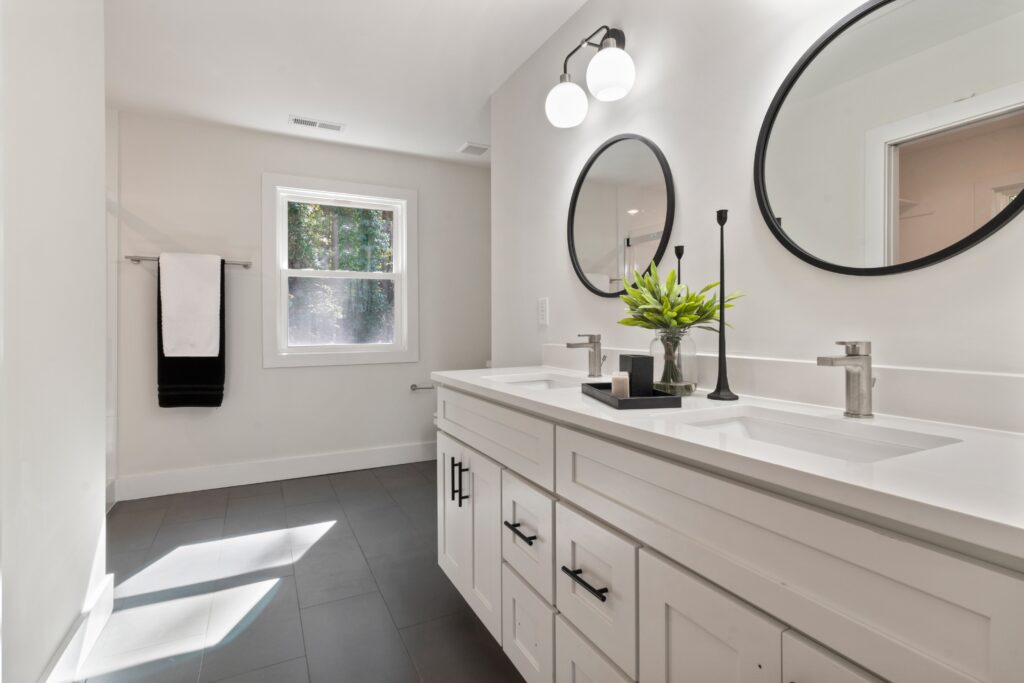
Bathroom renovation – what types of plaster would be suitable in the bathroom?
Types of plaster open to diffusion are suitable
Types of plaster such as gypsum, cement. Lime or clay plaster can be conditionally suitable for the bathroom. Although these types of plaster are able to absorb moisture from the air and release it again, there is still a danger from too much moisture. When renovating the bathroom, it is important that the plaster is not permanently deep wet or in contact with standing water. It should still be noted that the plaster smoothes sharp edges and corners wherever you come into direct contact with it. This minimizes the risk of injury when the skin comes into contact with it. However, these types of plaster are special dry mixtures and are not used in their pure form for plastering bathrooms.
Gypsum plaster
This type of plaster is less suitable in the shower area or where a lot of wetness is expected. Gypsum plaster must not be permanently exposed to moisture, otherwise it loses its stability and begins to become brittle. Occasional dampness, provided it can dry completely again, is not a problem. Therefore, gypsum plaster is well suited as a ceiling or wall plaster. However, in the wet room area such as the shower should refrain from using it.
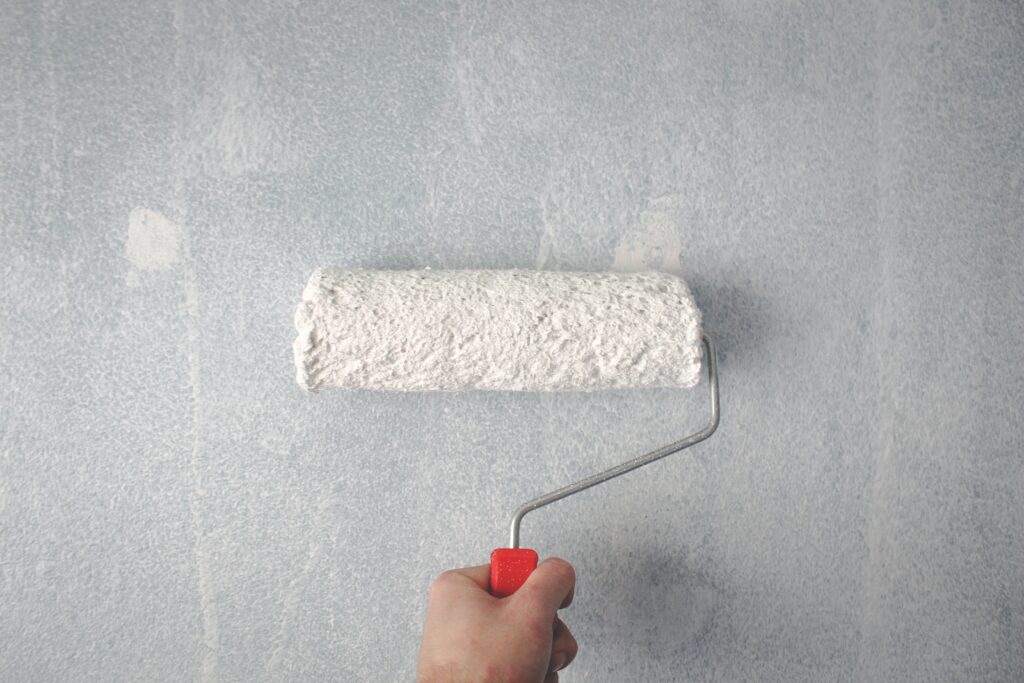
Cement plaster
Pure cement plaster is definitely not suitable for the bathroom. Cement-lime mixtures are more suitable. The cement-lime plaster becomes waterproof only when it is specially compacted. Without this compaction water resistance is not given. The result may be that the cement-lime plaster also loses its durability and also absorbs water.

Lime plaster
Lime plaster has the property of killing bacteria and mold particularly well due to its alkaline ph value. Therefore, it is particularly popular in the damp room. A special compaction process makes the lime plaster particularly impermeable to water, making it suitable for use in shower areas or as splash protection for washbasins.
Clay plaster
Clay plaster also belongs to the diffusion-open types of plaster and could well be used in the bathroom during bathroom renovation. Due to the special material properties, the humidity in the damp room can be reduced and mold growth can thus be counteracted. But care should be taken in direct contact with wetness. There is a risk that the clay plaster will then become soggy. The clay plaster with processed stones becomes a real eye-catcher.
When renovating the bathroom – if plaster on the walls in the bathroom, then additionally impregnate for moisture protection.
If you fancy a plastered wall in the bathroom such as the shower, we can only advise you to seal the plaster surface after plastering with a special coating, a so-called impregnation against moisture penetration. As already mentioned, especially cement and lime plasters require such a sealant. There are several options for a permanent seal against water penetration.
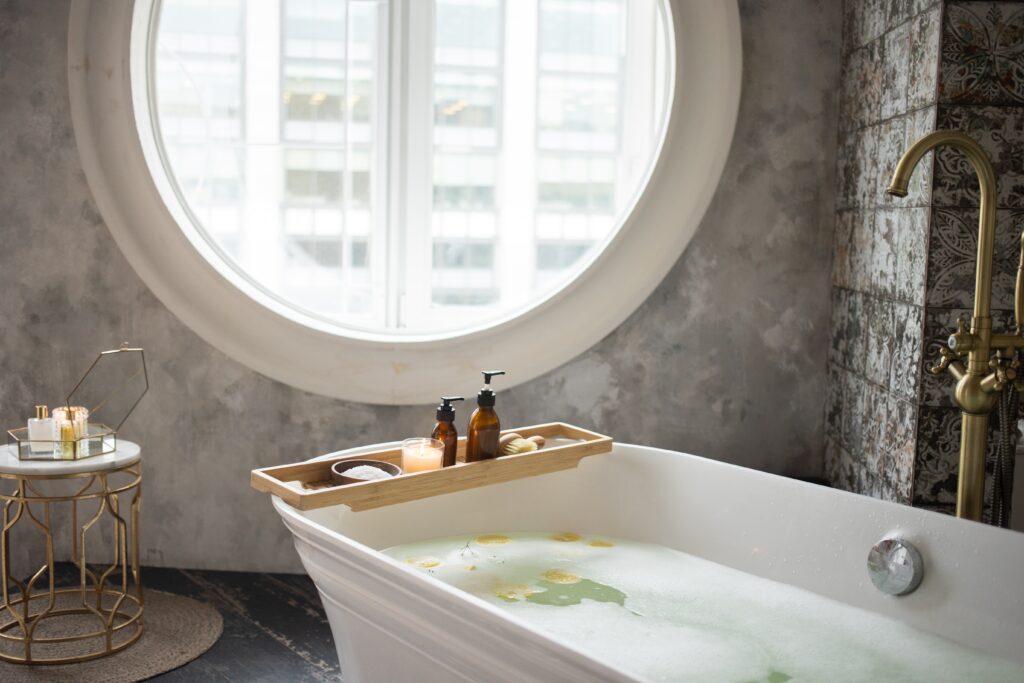
When renovating the bathroom: plaster in the bathroom suitable or rather not?
On this question, minds can sometimes disagree. Some claim that with the right plaster in the damp room, plaster is very suitable. The advantage of plaster is that it can be applied to the walls without joints, and also resists mold. We say that since bathrooms and kitchens are rooms with an average yet quite high moisture load, plaster is rather unsuitable. In the long run, condensation or splashing water, which forms on the walls after showering, may very well lead to moisture damage. If gypsum plaster is exposed to prolonged moisture, it may lose its strength and begin to crumble. Unsightly cracks in the plastered wall are then the result and water can penetrate unhindered and lead to water damage.
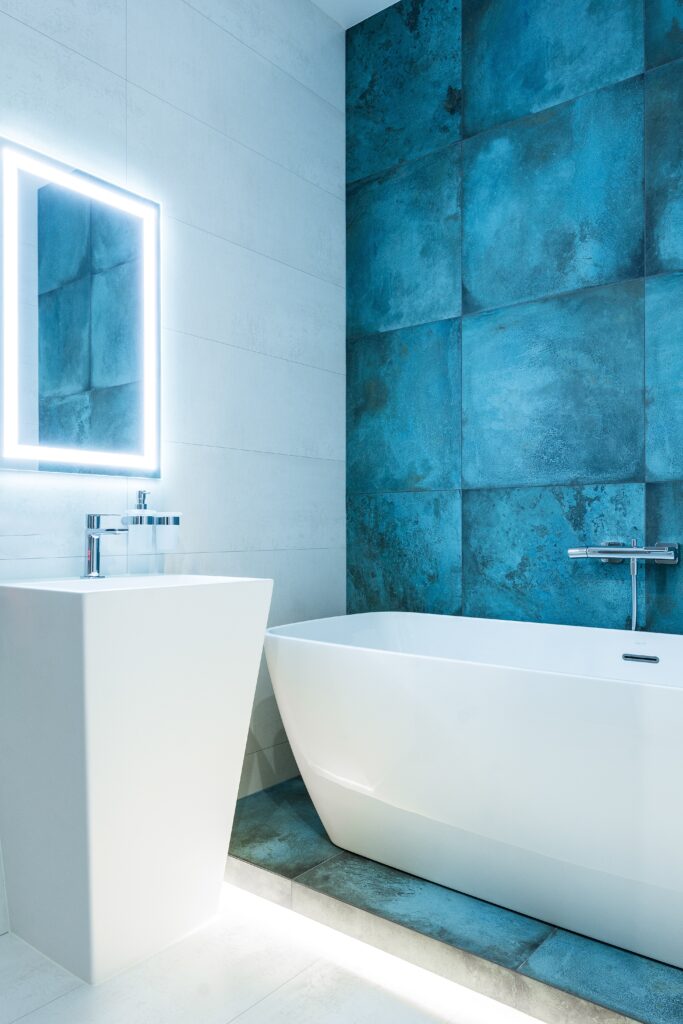
No recommendation of plaster in the bathroom by umbaumanager.ch
We advise you rather to tile your bathroom with beautiful tiles. There is a large selection of beautiful tiles. For example, those who like industrial style, concrete-look tiles will be suitable. These look, real cement amazingly similar and you do not have to worry about moisture damage, because the tiles in concrete look are definitely impermeable to water.
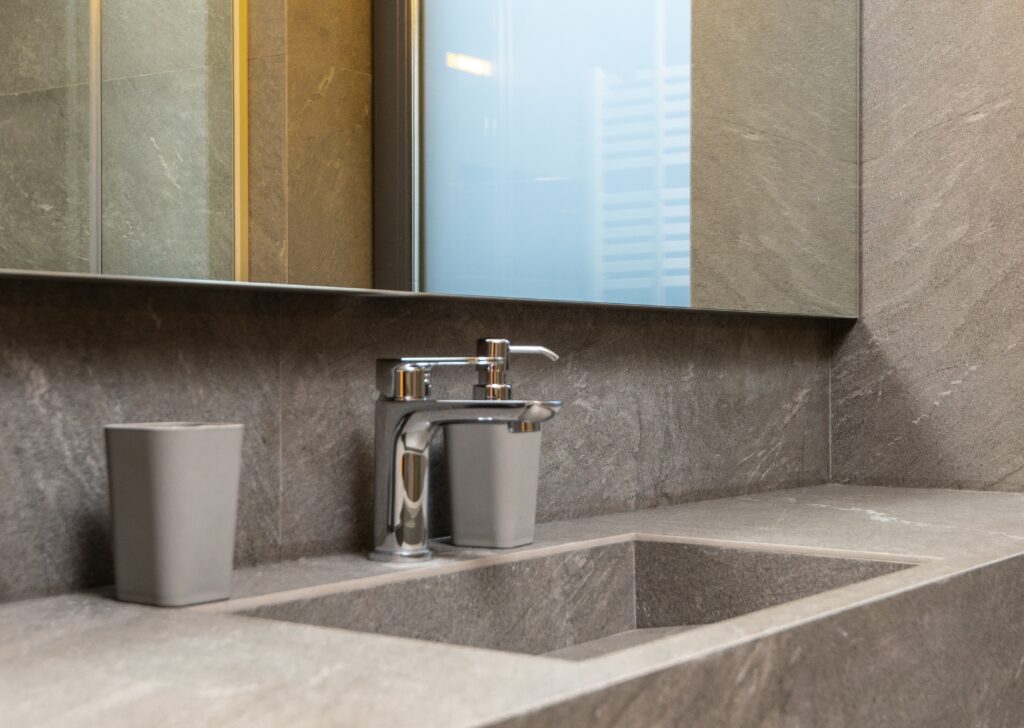
Bathroom renovation – whether laying tiles or plastering to be done professionally
Whether you decide to use tile or plaster in the bathroom, it is important to have the work done professionally. Old tiles in the bathroom definitely belong off the wall. It is not advisable to simply tile over it or even plaster over it. The substrate of old tiles can loosen over time and tiles often tend to become hollow. The consequence could be that individual tiles come loose. Therefore, we advise you to properly prepare the surface. Here it does not matter whether new tiling or plastering. Further, it is not advisable to tile on old tiles or apply plaster if mold has already formed at the joints. It’s better to redo everything properly once instead of having a rude awakening later.
umbaumanager.ch is a reliable contact around the topic bathroom renovation
Simply fill out the request form at: Bathroom renovation – umbaumanager.ch and soon we can look at your wishes individually together with you and offer a suitable solution for your new bathroom.
Are you unsure whether plaster or tiles should be used in the bathroom?
Can’t really imagine how your new bathroom can look like with beautiful new tile or plaster? We will be happy to advise you and with umbaumanager.ch we can help you visualize it better with a true-to-scale visualization. The special thing when you decide for a bathroom renovation with umbaumanager.ch is that we connect you as a builder digitally with all involved craftsmen. We take over the entire management of your bathroom renovation, so you don’t have to worry about almost anything. With us you can also go on vacation quite relaxed and when you come back refreshed, your new bathroom is already ready. Advantage: You can have an insight into the construction progress online at any time, as our platform maps everything transparently for you.





